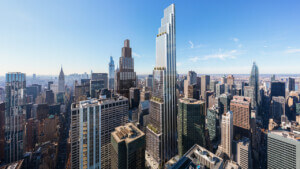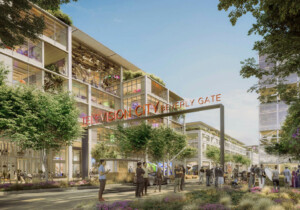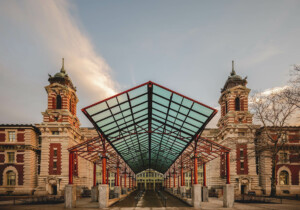In the wake of the looming executive order decreeing neoclassical as the federal government’s “preferred and default style,” how can architects consider the past while still creating buildings and spaces that are of their time?
Most architects seek the intriguing and inspiring when it comes to a new project, and for many, this means considering the project’s site, context, and history. And while the recent news about a potential executive order mandating neoclassical as the de-facto style for new federal buildings has architects up in arms, designers can look to the past in countless ways to create spaces that are meaningful reflections of their time and place, but free from the confines of a dictated historical style.
For some, an interest in the past began even before practicing architecture. Tal Schori and Rustam Mehta, cofounders of the Brooklyn-based GRT Architects, proudly state that they “studied history before design,” and that this has instilled in them a love and respect for history that “yields an understanding that the past is layered and compatible with new work, executed confidently in its own voice.”
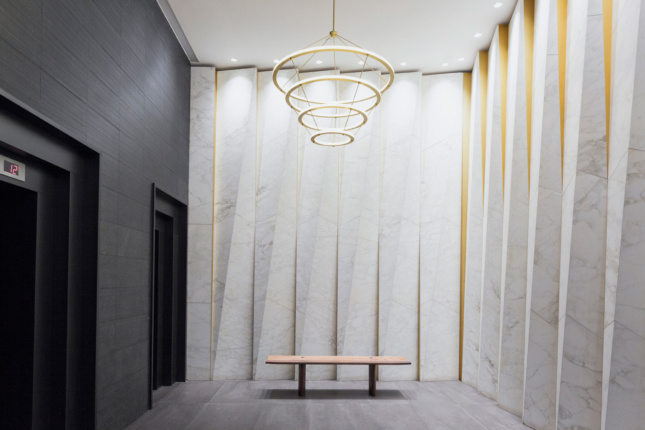
Their approach looks to historical references, in particular architectural detailing, craftsmanship, and ornament, to create “something unapologetically new.” At a lobby renovation of the Fashion Tower, an Art Deco office building in New York’s Garment District and the new firm’s first project, Schori and Mehta lined the walls of the entry corridor with vertical panels of angled marble. The pleated pattern of the marble recalls the verticality of Art Deco motifs as well as the folding of textiles as an ode to the building’s origins.

GRT’s self-proclaimed “aesthetic and historical agenda” was further explored in a line of concrete tiles for Kaza Concrete. The triangular tiles, available in three different sizes, were cast with asymmetrical grooves in deep relief and designed so that they can be arranged in a variety of ways: Installation in a regular pattern emulates a flattened fluted column; alternating directions can create a herringbone pattern, and a nonrepeating arrangement leads to an abstract pattern. The interplay of symmetry, tone, and texture results in a tile collection that is firmly in the land of modernity while looking over its shoulder to the past.
For architect Elizabeth Roberts of the eponymous Brooklyn-based Elizabeth Roberts Architecture, an interest in history led her to complete a master’s in historic preservation before starting her own firm that focuses on renovations and additions to existing buildings that, in her words, “breathe new life into historic buildings.” Yet despite her “love for historic buildings,” she explained, she also believes in “authenticity”—that additions should appear “different” from the original structure while still “respecting their original massing, details, and materials.” Delicately glazed facades, modern furniture, and an eclectic sense of minimalism pervade her work and visually declare old versus new.
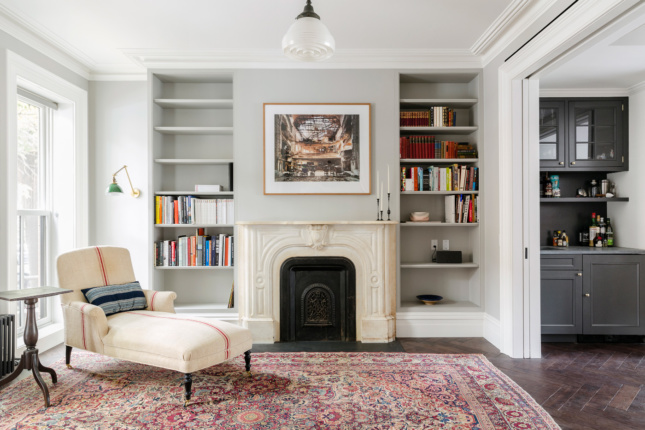
But even where her work distinguishes itself from the existing fabric, she still begins every project by “understanding a building’s story” through research on its history, context, and neighborhood, she noted. Craftsmanship plays an important role as well, and she “enjoys seeing artisans continue their craft in our projects,” regularly hiring master plasterers and woodworkers who understand historic styles to create new, elaborate elements such as handrails.
While some designers are inspired by materials, detailing, and construction techniques of the past, others look to the unique cultural heritage of the region to tell the story of a place through its built environment. In Hawai’i, for example, oral history and genealogy chants were the main means of passing down history for centuries, and many of these oral histories have been collected at the Bernice Pauahi Bishop Museum in Honolulu — a source architect Ma Ry Kim, a principal and design director at the Honolulu-based firm G70, frequently uses as part of her initial research for the project.
During the recent renovation of The Westin Maui Resort & Spa, Ka’anapali, the museum’s archives revealed that prior to the construction of the 1971 hotel, the site had historically been covered with a native grass “that held morning dew, giving water and life to land,” said Kim. Inspired by this untouched landscape, she employed vertical elements throughout the project that hark back to the site’s tall blades of grass, from the wood battens on the exterior of the building to the carefully selected artwork found throughout the lobby and even in the woven textiles selected for guest’s rooms.
For Kim, architecture is an important way to tell Hawai’i’s cultural story. She noted that many sites “tread on indigenous lands that were once protected and considered sacred places,” and she thus tries to “seek balance between the modern world and the historical markings of a place” in her designs. At another hotel renovation project, the Prince Waikiki Hotel, she learned of a long-forgotten ancestral stream that ran below the hotel’s foundations. The stream’s boundaries were graphically resurrected through contrasting flooring materials in the lobby, and the stream inspired the central suspended artwork created by local residents and employees that consists of nearly 1,000 copper hinana, a local fish—an ode to the area’s native landscape.

But even projects in the heart of major metropolises like New York City can nod to their existing context, like Foster + Partners’ new tower in Midtown Manhattan at 100 East 53rd Street, which pays homage to the modernist landmarks that surround it: the iconic Seagram Building and equally storied Lever House. Peter Han, partner at Foster + Partners, detailed how the firm “focused on the relationship between 100 East 53rd Street and the Seagram Building, aiming to create an appropriate counterpoint to the classic office tower.” The building’s crisply white, undulating skin contrasts with the Seagram Building’s dark bronze facade, while the massing of a “9-story bustle,” as Han described it, sitting at the base of the tower, “echoes the volumes of its neighbor,” Lever House.
Indeed, while styles may come and go, the past—and its use as a source for inspiration—will always exist, ad infinitum.








